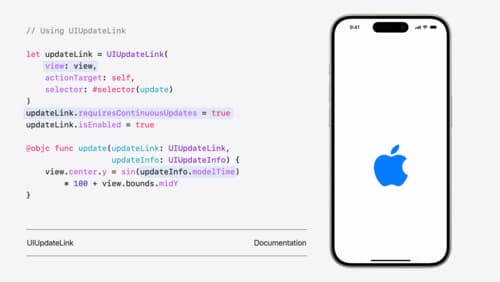Tab bar
Asked on 2024-07-30
2 searches
The tab bar in iPadOS 18 has undergone several enhancements to improve user experience and customization. Here are some key points:
-
New Compact Look: The tab bar has a refreshed, more compact look that reduces unused vertical and horizontal space, bringing more content to the forefront. It now sits at the top of the app, closer to other navigation controls, making it easier to reach (Elevate your tab and sidebar experience in iPadOS).
-
Integration with Navigation Bar: The tab bar shares a safe area with the navigation bar for a more integrated appearance. Items from the navigation bar will automatically move to overflow if there's not enough room to show alongside the tab bar (Elevate your tab and sidebar experience in iPadOS).
-
Customization Features: Users can customize the tab bar through drag and drop, adding their favorite tabs or reordering them. The tab bar contains three sections: fixed, customizable, and pinned. The fixed section is for important destinations and disallows customization, the customizable section allows rearrangement, and the pinned section (like search) is always available at the trailing edge (Elevate your tab and sidebar experience in iPadOS).
-
Sidebar Integration: The tab bar can morph into a sidebar for deeper navigation. This is useful for apps with rich hierarchies, allowing users to navigate without reopening the sidebar. The sidebar supports customization features similar to the tab bar (Platforms State of the Union).
-
SwiftUI and UIKit Updates: New APIs in SwiftUI and UIKit make it easier to implement and customize tab bars. In SwiftUI, a new syntax helps catch common errors at build time, and in UIKit, new APIs better describe app hierarchies to
UITabBarController(Elevate your tab and sidebar experience in iPadOS).
For a detailed overview, you can watch the session Elevate your tab and sidebar experience in iPadOS.

What’s new in UIKit
Explore everything new in UIKit, including tab and document launch experiences, transitions, and text and input changes. We’ll also discuss better-than-ever interoperability between UIKit and SwiftUI animations and gestures, as well as general improvements throughout UIKit.

Platforms State of the Union
Discover the newest advancements on Apple platforms.

Get started with Dynamic Type
Dynamic Type lets people choose their preferred text size across the system and all of their apps. To help you get started supporting Dynamic Type, we’ll cover the fundamentals: How it works, how to find issues with scaling text in your app, and how to take practical steps using SwiftUI and UIKit to create a great Dynamic Type experience. We’ll also show how you can best use the Large Content Viewer to make navigation controls accessible to everyone.
